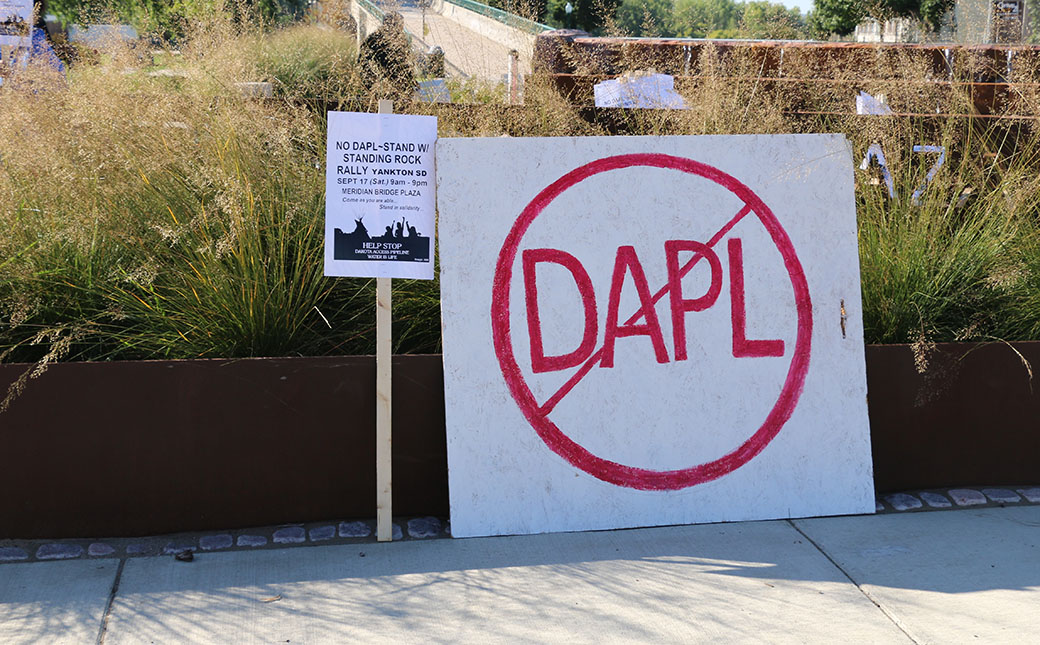
Editorial: DAPL raises questions beyond the pipeline
As American college students, we aren’t known for sitting idly in the face of injustice. The Dakota Access Pipeline is no exception. Across the nation, people are rallying alongside the Standing Rock Sioux Tribe in North Dakota to stop production plans for the pipeline.
Even after the Obama administration halted the pipeline, the risk still stands for future development. The entire situation brings forth a disconnect among the government, the country’s diverse people and our environmental impact. Through the added influence and awareness from college students and faculty, we can continue the important conversation of respect and mindfulness.
Voices from USD and the surrounding community are already rising to this occasion. The Native American Cultural Center collected and delivered supplies to the protestors at Standing Rock. Yankton held two peaceful protests this past weekend to spread further awareness.
With the state’s dominant Native American population, the collective support in preserving Standing Rock’s traditions and land is admirable. In society’s melting pot of ethnicities, Native Americans tend to not receive regular acknowledgement. But the DAPL demonstrates that when a group of people stands as one, they’re nothing short of powerful.
This issue, however, goes beyond the Native American tribes. The environment as we know it is at stake. The pipeline’s route near the Standing Rock reservation leaves the community’s water supply at risk for contamination. The route of the pipeline flows directly under the Missouri River. Without knowing the pipeline’s risk for oil spills, we have little ways to predict the potential water quality for Standing Rock or any other location relying on the river, let alone any of the species and ecosystems also residing in the area.
With the widespread attention from DAPL, America is left wondering if and when this situation will occur again. After the Keystone XL Pipeline controversy, the Army Corps of Engineers has approved virtually every pipeline construction without the federally required environmental impact statements. Through the Nationwide Permit 12, the Corps can treat 1,200-mile pipelines as multiple half-acre projects. Since the document acts as a blanket pre-issued permit, officials can approve pipelines without going through the full evaluation and process. Not to mention the potential oil spills that would leave the low-income community scrambling. Pipeline leak detection systems are flawed in that they usually don’t detect spills less than two percent of the liquid. That percentage seems small, but for a community like Standing Rock, it could result in drastic consequences.
According to MinnPost, companies frequently use eminent domain in their projects to legally obtain any necessary land. The industry has focused predominantly on the production and transportation of oil rather than any other factors involved. This issue represents a much greater problem in environmental politics. The DAPL protests may set a precedent for more inclusive discussion on American energy and transparent proceedings that consider all aspects of energy projects.
The DAPL protests show no sign of losing momentum any time soon. We cannot forget the significance of using our freedoms to stand up for what is ethical and just. This particular fight cannot stand with a single group, but requires a diverse mix of Native Americans, landowners and conscious individuals. For college students, we often use this time to focus on ourselves, but the future of others and the environment is also worth considering.
As the saying goes, it takes a whole village to raise a child. But it takes an entire nation to raise a thoughtful mindset.
